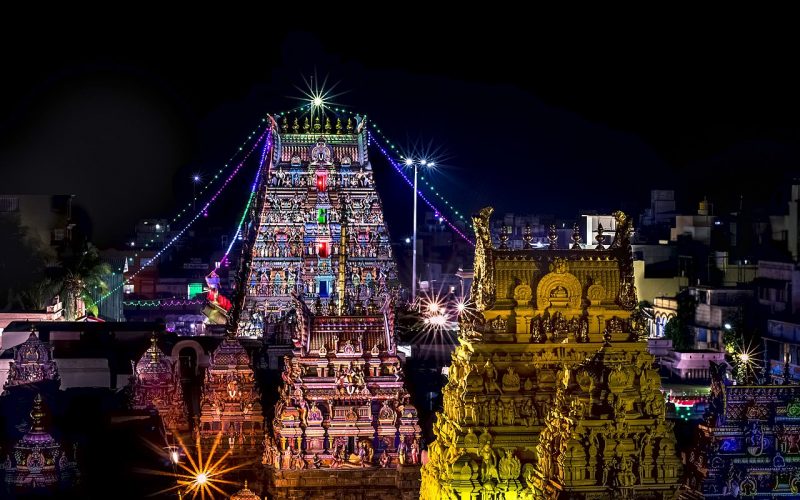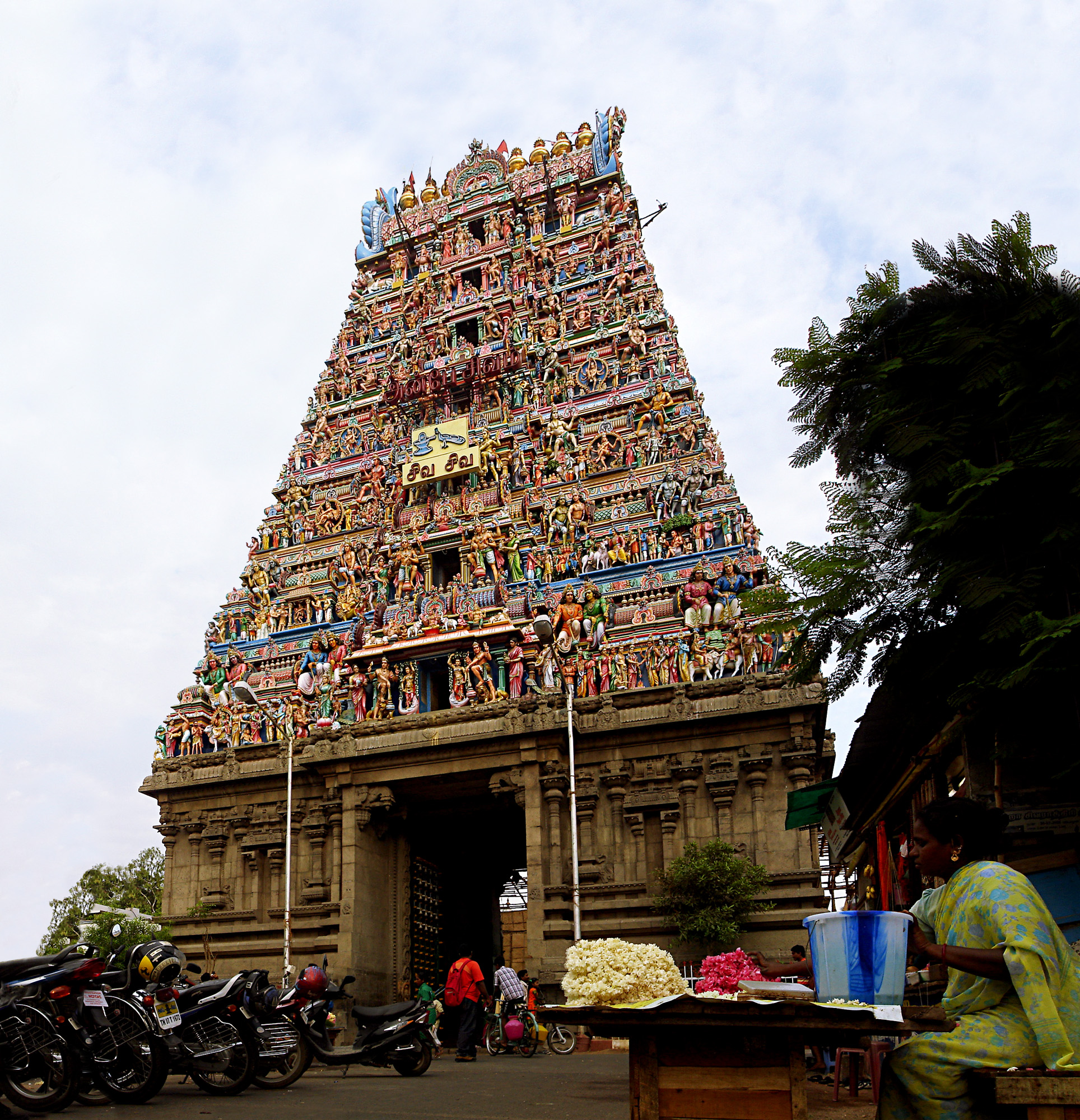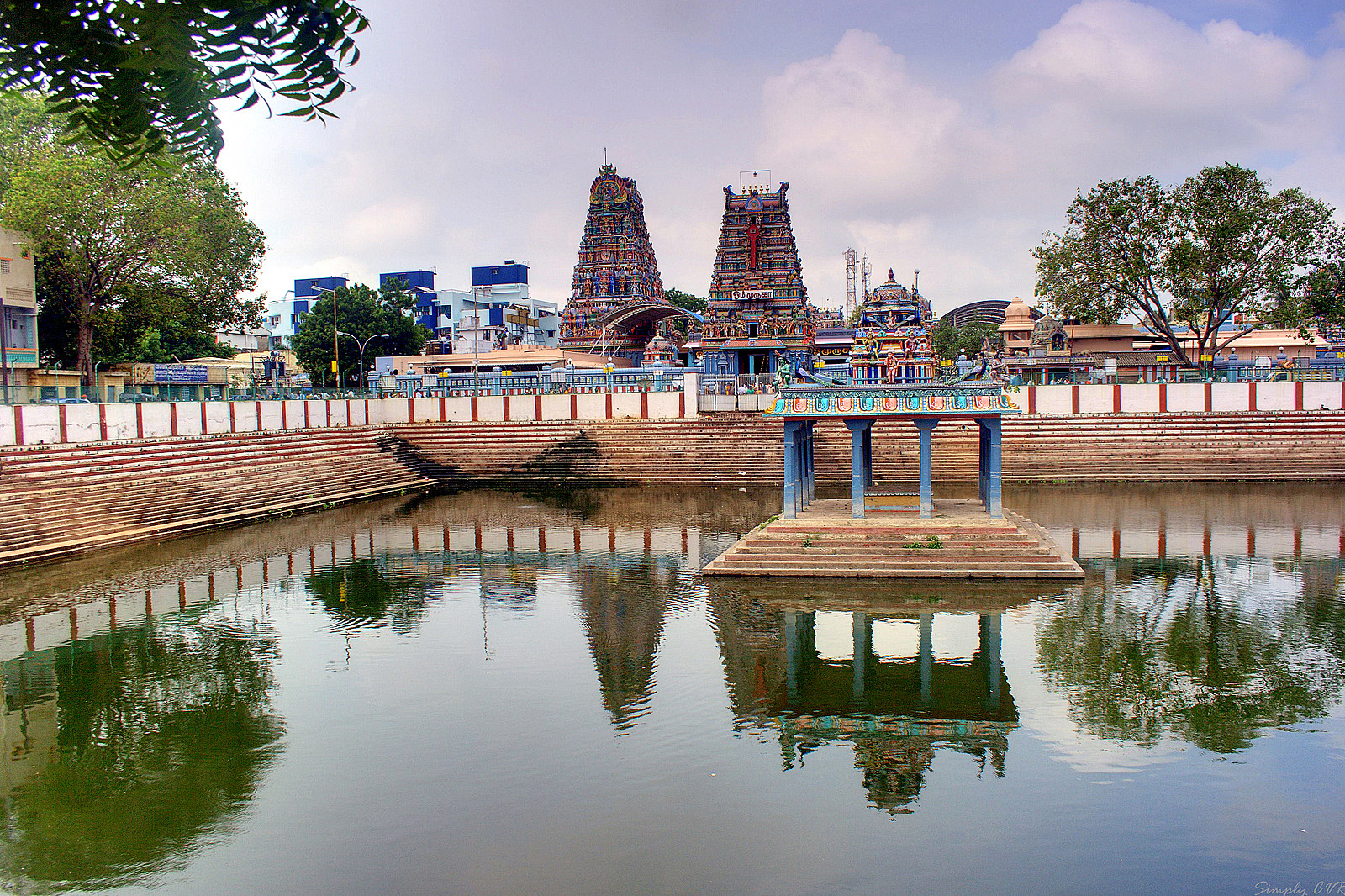Our Research team takes a lighthearted look at some heavy-weight temples of Chennai
Temple Gopurams are as integral to Chennai as jasmine strands, filter coffee and checked lungis. Chennai has hundreds of temples to boast of, each accompanied by a host of wonderful traditions and intriguing myths. But Chennai also abounds with equally fascinating stories of lesser known temples, and lesser known stories of temples that were once famous. This article explores some such stories.

The Gods housed inside the big temples are benevolent and awe-inspiring. They bless the good and chastise the wicked, and generally go about making sure that all is well in the world. The Parthasarathi temple in Triplicane has Lord Krishna depicted as Parthasarathi, the driver of Arjuna’s chariot. He had sworn not to fight in that mother of all wars at Kurukshetra, and so he stands in the sanctum, with only his conch for company, his face scarred by marks of battle. And yes, a resplendent moustache, thick and curling, graces his upper lip. Our men love their moustaches here, and they are seen as a sign of machismo, but a God with one is a bit of a rarity.
[Detour: Curling moustaches, dark stocky bodies, armed to the teeth – you may not have imagined gods this way. But such gods are not an uncommon sight in Tamil Nadu. Watch this short video for the story of the village gods of Tamil Nadu]

The Kapaleeshwara temple in Mylapore is dedicated to Lord Shiva, the God of destruction. A mighty God, with a matching temper, he once found his wife Parvathi paying more attention to a dancing peacock than his words. And zap, there she was, banished to Earth, to be born a peacock! Some believe that this story is set in the area that’s called Mylapore now. Shiva soon missed her and came down to earth to take Parvathi back with him. And legend has it that this incident gave Mylapore its name – Myil being the word for peacock in Tamil.

Then there is the Vadapalani temple dedicated to Muruga – the God of War and the most handsome of all gods. Popular as Karthikeya in Northern India, he is a part of every puja pandal in Bengal, for there, he is considered Durga’s son.
Are you familiar with Goddess Thulakanathamman? Probably not. But walk across the bylanes of Triplicane and you might just end up at a 300 hundred year old temple dedicated to this Goddess.
Speak to the temple priest and the story you will get to hear is that this idol was found by a local Muslim boy, and then the Goddess subsequently appeared to him in his dreams. ‘Thulakkan’ being a local slang for Muslims, the deity promptly acquired the name of Thulakanathamman, loosely translating to ‘Muslim Goddess’. The temple is frequented by people of many faiths today, and this deity, like most ‘Amman’ temples, is considered extremely powerful and capable of ridding one of all evils.
Built a few centuries ago, the Velleswara temple tells us the story of a sage called Shukracharya who was the Guru, or teacher, of the demons. It is believed that long ago, Mahabali, the King of Asuras (Demons), had the heavens and earth under his control. The gods approached Lord Vishnu to help them overthrow the demon king. Vishnu disguised himself as a Brahmin named Vamana and planned to ask for all three worlds as alms from the Asura King . The wise sage, Shukracharya, saw through the plan and rushed to warn the King. But Mahabali was a man of his word and surrendered his kingdom to Vamana without pausing a beat. Shukracharya was taken aback and angered by this. Just as Bali was about to seal the promise by symbolically pouring out water from his vase, Shukracharya shrank himself and sat inside the spout of the vase. Vamana simply plucked a piece of straw and poked the jammed spout with it. The result was that Shukracharya was blinded in one eye. Shukracharya felt insulted and prayed hard to Lord Shiva, who, pleased with his devotion, appeared before him and gave him back his eyesight. The Velleswara temple commemorates this penance of Shukracharya. This temple houses idols of both Shiva and Vishnu.

The ancient Marundeeswarar temple dates back at least to the 7th century. ‘Marundeeswarar’ translates to ‘the lord of medicine’ and this temple is dedicated to Lord Shiva, worshipped here as a divine physician. And the temple has an impressive list of associations cutting across Hindu dynasties of various eras. Sage Agastya, the all powerful sage who practiced Herbal medicine, is believed to have been introduced into the mysteries of the herbal world in this very place by Lord Shiva himself. Tirugnanasambandar, the ardent devotee of Lord Shiva is believed to have visited this temple and sung his praises here, as did Arunagirinathar, the 15th century poet from Thiruvannamalai. Sage Valmiki, the author of the epic Ramayana is said to have been blessed by Shiva here and hence the place started being known as Thiruvalmikiyur, gradually changing to the current ‘Thiruvanmyur’.
Some of the people associated with these temples have interesting stories too. Take Pei Alwar for instance, who sang songs in praise of Vishnu and has sung of the temple in Triplicane. The story goes that the saint was born in Mylapore and was found on a lily flower in a temple tank in that area. Then there was Sivanesan, a merchant in Mylapore, who wanted to give his beautiful daughter, Poompavai, to a saintly man who sang divine songs – Thirugnanasambandar. The daughter died of a snake bite, and it only needed the saint to visit them and sing a song to Shiva, to bring her back to life once more. And these two share a shrine in the Kapaleeshwara temple till date. Vadapalani has an equally exotic tale to its credit, that of Annaswami Thambiran. This venerable old man worshipped a picture of Muruga, and whenever he did, he found that he had the ability to foretell the future. And he worked miracles – he set the sick back on their feet, got the jobless into the habit of earning money, and generally made his presence felt. When he passed on, the place he lived in slowly grew into a large Muruga temple, and there it stands till today – attracting the faithful in the thousands.
Like many other temples dedicated to an ‘Amman’ or Goddess, the Mundakanniamman temple also plays host to many practices which baffle the viewer. From fire-walking to body piercing, you can see it all here during the festive months. This is also the place devotees come to get cured of chicken pox and measles. This temple is believed to have been built around an idol that was found among snake pits, and worshippers soon took to the practice of ‘feeding’ the snakes.They called the Goddess Mundaga-kanni-Amman, or the “Goddess whose eyes are as beautiful as a lotus” Though there are no snakes here today, people still leave raw eggs and milk at a dead tree within the temple that might have once been home to snakes. An interesting story that you would get to hear in this temple is about why the main shrine does not have a permanent roof over it. It seems many have tried putting a roof over the idol, and each time it has come down in haste. So people believe that the Goddess here considers the sky to be her roof and will not allow any other structure over her head. Till date, the idol is kept in a thatched temporary structure.
Did you like this sneak-peek into Chennai’s temples? You may also like these stories about other monuments of Chennai.
Archives
- January 2022
- December 2021
- November 2021
- August 2021
- March 2021
- February 2021
- January 2021
- December 2020
- November 2020
- October 2020
- September 2020
- August 2020
- April 2020
- March 2020
- February 2020
- January 2020
- November 2019
- October 2019
- September 2019
- August 2019
- July 2019
- June 2019
- August 2017
- February 2017
- January 2017
- October 2013
Featured Posts
- Tales that pots tell: Keeladi excavations AUGUST 18, 2021
- The Last Grand Nawab: Wallajah FEBRUARY 10, 2021
- How Tej Singh became Raja Desingu of Gingee FEBRUARY 5, 2021
- How Shahjahan seized the Mughal throne JANUARY 28, 2021
- Alai Darwaza – Qutub Minar Complex, Delhi NOVEMBER 21, 2020
- Marking History through British buildings NOVEMBER 17, 2020
- The last great queen of Travancore NOVEMBER 7, 2020
- Brahmi and the evolution of scripts OCTOBER 15, 2020
- The Cambodian King of Kanchipuram OCTOBER 14, 2020
- James Prinsep – the man who read the writing on the wall OCTOBER 10, 2020
- Mariamman – the Village Goddess who travelled SEPTEMBER 30, 2020
- Misnamed Monuments of Mamallapuram SEPTEMBER 28, 2020








